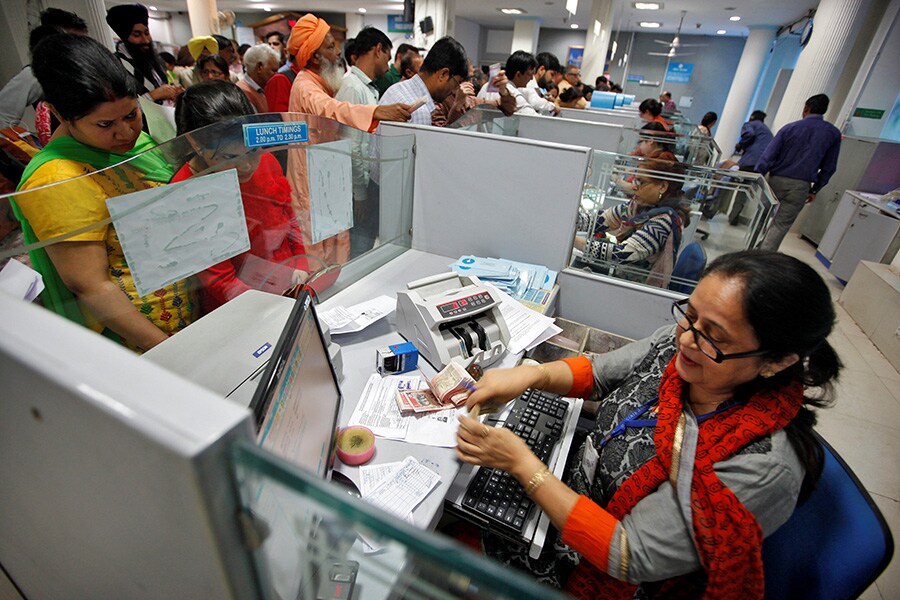Banks' Q3 earnings: pain likely to be seen further, despite deposit growth
Weak asset quality will continue to impact profitability of banks
.jpg?im=Resize,width=500,aspect=fit,type=normal)
.jpg?im=Resize,width=500,aspect=fit,type=normal)
 Image: Ajay Verma / Reuters (For illustrative purposes only)
Image: Ajay Verma / Reuters (For illustrative purposes only)
The quarter ended December will be amongst the most eventful for Indian banks – including demonetization and a cash reserve ratio (CRR) hike announced by the central bank – which will have an impact on the balance sheets of private and public banks which are set to be announced from January 10 onwards, starting with IndusInd Bank.
Demonetization of the Rs 500 and Rs 1,000 notes – totaling to about 86 percent of the currency within the system -- announced by the Prime Minister Narendra Modi on November 8, will have a positive impact in terms of higher growth in deposits for banks. Thanks to the note ban, banks have seen an influx of deposits, largely in the form of current and savings accounts (CASA). (It is believed that about Rs 15 lakh crore would have come back into the banking system in the form of deposits, since demonetization was announced).
But the additional deposit growth will be offset by the impact of a CRR hike announced earlier and weak loan growth, analysts tracking the sector say. The RBI had temporarily hiked the CRR for banks to 100 percent at a time when banks were flush with higher deposits.
Asset quality at banks, which has been a pressing issue over the past two years, will remain a concern in the October to December 2016 quarter too, but the pace of deterioration in asset quality is expected to be lower in the last quarter than what was seen 12-18 months earlier, according to Moody’s analysts.
Moody's and ratings agency ICRA see subdued prospects for India's banks, as asset deterioration will be a key challenge over the medium term. “Asset quality will remain a negative driver of the credit profiles of most Indian banks and the stock of impaired loans. Non-performing loans and standard restructured loans will still rise,” says Moody’s senior analyst Alka Anbarasu.
But she added that the pace of deterioration in asset quality, over the next 12-18 months, should be lower than what was seen over the last five years, and especially compared to financial year 2016.
Banks are expected to continue to focus on resolving some of their large “problem accounts.”
Parag Jariwala of Religare Capital Markets says that the guidance and outlook from bank managements will be something to look out for. “Management commentary on retail and SME asset quality will be a key parameter to watch for.” He said that non-performing assets (NPAs) in these segments may remain stable in Q3 (October to December 2016). This would be due to the relief which the RBI had awarded in December end, when it granted banks a grace period of 90 days in recognizing an account as an NPA, on outstanding accounts less than Rs 1 crore.
Small finance banks and non-banking financial companies (NBFCs) are also likely to have faced a tough quarter. NBFCs had seen their momentum pick up in the festive season but “they will report a quarter-on-quarter decline in disbursements, leading to muted assets under management performance,” says HDFC Securities’ analysts Darpin Shah and Parul Gulati in a report to clients issued Monday.
First Published: Jan 10, 2017, 08:48
Subscribe Now